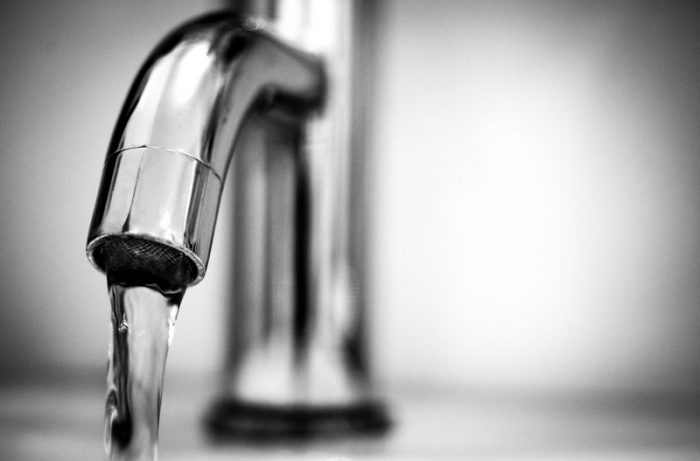
Electricity is an integral part of our society, but the units used to measure electricity can be confusing. Perhaps, you’ve been wondering – “How many watts are there in an amp?” This turns out to be a difficult question to answer, but the simplest the answer is that it depends on a number of different factors.
You can’t directly convert amps to watts or watts to amps because there isn’t an exact relationship between the two things that they measure, they both measure different aspects of an electrical current. However, since watts and amps (and volts) just measure different parts of an electrical current, they are all related and knowing two of the measurements will enable you to determine the missing measurement.
So if you have watts and volts, you can determine the amount of amps. You can use this equation:
Amps = Watts / Volts
Definitions
Let’s start off by defining our terms. Ampere, usually just shortened to amps, is the base unit used to measure electrical current. The intensity of an electrical current given in amps can be calculated by taking the voltage of the current and dividing it by its resistance.
Watts are the basic unit of measurement for electrical power, a measurement of the rate of energy transfer and defined as a derived unit of 1 joule per second. Watts are obtained by multiplying volts and amps.
Volts is a measurement of electrical potential, given as the difference between two points of a conductor that has one amp of constant current in it, with one watt of power between the two points.
Using Water As A Metaphor
To begin with, let’s start off by using a metaphor to explain the relationship between watts, amps, and volts. If we think of electricity as water flowing through a pipe, it becomes easier to visualize the attributes of electricity that amps, watts, and volts measure. When water is moving through a pipe, there is a certain amount/quantity or volume of the water that is moving past any one point in the pipe at a specific point in time. Amps can be said to represent the volume or quantity of the moving water for a given length of time, or the rate of flow of the water through the pipe.
However, there’s a limiting factor that influences how much water can move through a pipe. The size of the pipe creates a limit on the volume of water that can be transported through it at one time. Electrical resistance can be thought of like the size of the pipe, imposing a limit on how much water/current can move through the pipe at a time.
Another important thing to consider is water pressure. What is the pressure of the water that comes out of a faucet or showerhead, for instance? The power of the water moving through a pipe could be determined by multiplying volume and pressure together (volume x pressure), and you can think of voltage as being equivalent to water pressure. In terms of electricity, the overall power of an electrical current (watts) is determined by relating amps and volts.
So if you were to increase the amount of pressure in a tank of water, as you might be able to guess, more water would come out of the tanks through the pipe. This analogy holds true when examining the function of an electrical system. Upping the voltage of a system makes more current flow through the system. Similarly, increasing the diameter of the pipe or hose would enable more water to come out of the pipe or hose. You can think of decreasing an electrical system’s resistance in a similar way, increasing the overall flow of the current.
Remember that electrical power is measured with watts, and the power of the electrical system (P) is just the voltage multiplied by the current of the system. Using the analogy of a hose once more, imagine pointing a hose at a waterwheel. If you assume that the waterwheel is hooked up to a generator, there would be two different ways to increase the amount of power generated by the waterwheel. Increasing the pressure of the water means that the water hitting the waterwheel would have more force and consequently the wheel would turn faster, creating more power. The waterwheel would also turn faster if you increased the flow rate of the water, because more water would be hitting it at one time.
Discussing Electrical Efficiency
As was seen, increasing either the voltage or the current results in a higher output of power. For instance, let’s assume that you have a six volt battery hooked up to a 6 V lightbulb. If the output of the lightbulb is set at 100 W, then it becomes easy to calculate just how many amps would be needed to get 100 W of power out of the six volt bulb. This can be done with the I = P/V equation. Just substitute the numbers in.
We know that P = 100, and V = 6. Rearranging the equations and solving for I gives us:
I = 100 W/6 V = 16.67 amps
Were we instead using a 12 V lightbulb and a 12 V battery, still aiming to get 100 W of power, we would need half the current. The above calculation would give us:
I = 100 W/12 V = 8.33 amps
This means a 12 V lightbulb and a 12 V battery produces the exact same amount of power with half the needed current. This is important because using less current to generate the same amount of power confers an advantage, namely, it reduces the amount of power consumed due to the resistance of the electrical wires. The electrical wires will always have some resistance and consume some power, and in general, the amount of power consumed will go up as the strength of the current moving through the wires goes up.
As the resistance of the wires increases, the power consumed by the wires will also increase. Yet the higher the current, the higher the power consumed by the wires. This means that higher voltages can make electrical systems more efficient, leading to less power loss, by reducing the strength of the current. Electric motors work in a similar fashion and they also become more efficient at higher voltages.
Calculations With Amps And Watts
Converting From Amps To Watts
As previously mentioned, if you have two of the three measurements, you can find the third measurement. For instance, if you know the volts and amps of the device are, it is easy to calculate how many watts are needed. Let’s imagine that you are trying to charge up a battery rated for 0.5 amps and that the current in your household is fixed at 120 V. To find the amount of watts needed, you simply have to multiply the amps and volts together.
Watts = Amps x Volts
Watts = 0.5 x 120 = 60
This means that when the battery in question charges, it utilizes 60 W of electricity.
Converting From Watts To Amps
Just as it is possible to convert from amps to watts when possessing information on both amps and volts, if you have information on watts and volts you can convert to amps. To do so, you simply have to divide the watts by the volts to get amps:
Amps = Watts / Volts
As an example let’s say that you are trying to find out how many amps a refrigerator is rated for. You know that the refrigerator is rated for 1500 W in a circuit fixed at 120 V. To find out how many amps the refrigerator is rated for just divide 1500 x 120, to get 12.5. So you now know that the refrigerator is rated at 12.5 A, though it is likely to have a rating of 13 A or so on it because decimal values are frequently just rounded to the highest number.
Let’s take a look at another example. Let’s say you are trying to find the number of amps on an electric motor. If the motor is rated at 600 W at a fixed household voltage of 120 V, how many amps would it be? Again amps is just watts divided by voltage so divide 600 by 120 to get five. This means that the motor would be rated for 5 A.
In reality, ratings on home appliances usually won’t be this specific because home appliances like blenders and skillets frequently have a variety of modes that they can operate in which use different levels of amps. High power modes may draw higher amps than normal usage, so to compensate for this, appliances are frequently rated with a range that is expected to cover normal use, for example, rated five to six amps instead of just five amps.












